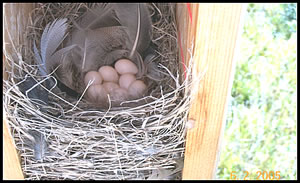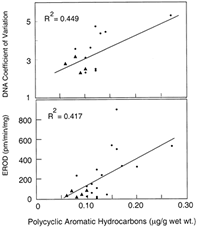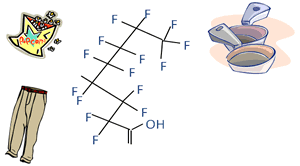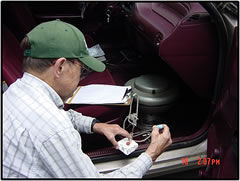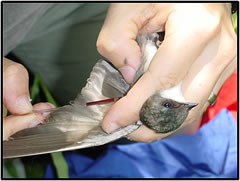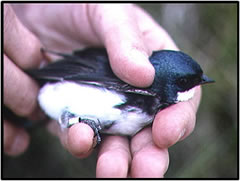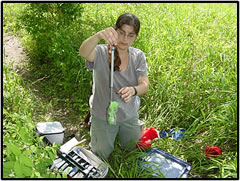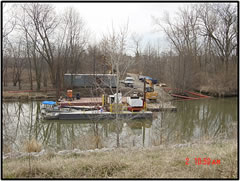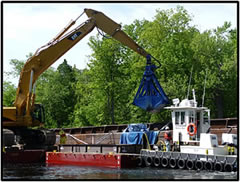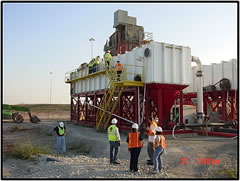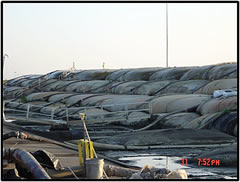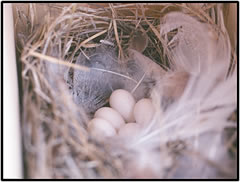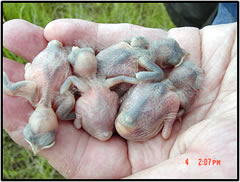Wildlife Toxicology
Great Lakes Restoration Initiative (GLRI) Project 80
Goals and objectives
Use tree swallows and colonial waterbirds in the Great Lakes to evaluate contaminant
|
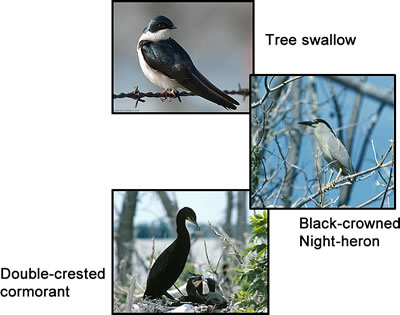 |
Objectives 1 and 2 - Exposure data will concentrate on several classes of new and emerging contaminants, such as the now ubiquitous flame retardants (polybrominated diphenyl ethers [PBDCs]) and stain repellents (perfluorinated compounds [PFCs]).These data will be important in understanding the distribution of these relatively-little studied chemicals in birds. We will be gathering data on several well-studied chemical classes (PCBs, mercury, dioxins) as well because these can still be present in the environment at possible levels of concern.
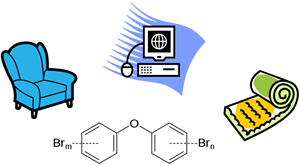 Polybrominated diphenyl ethers (PBDEs) are flame retardants found in, among other things, hard plastics such as TV and computer monitors, in fabric coatings, and in foam products in furniture. |
Perfluorinated chemicals(PFCs) are commonly found in food package coatings, stain repellents in clothes, and non-stick cookware, as well as, many industrial usages. |
Objective 3 - Effects of environmental contaminants on birds were first brought to the nation’s attention by Rachel Carson in her seminal book Silent Spring. Since then birds have been used effectively in contaminant effect assessments. Project 80 will be measuring numerous different types of endpoints ranging from genetic up to population-level endpoints.
Processing samples |
Blood sampling |
Banding adult birds |
Weights and measurements |
Objective 4 - Cleaning up contaminated areas is an important component of the GLRI program. Equally important is assessing how effective those remedies have been.Project 80 will provide important documentation of remedy effectiveness.
Dredging |
Dredging |
Sorting and processing dredged material |
Final storage |
A particular emphasis of GLRI as a whole is to make physical improvements to locations that result in a cleaner, safer, and better environment. One measure of this progress is the de-listing of Areas of Concern by removing Beneficial Use Impairments (BUIs). Project 80 provides data specific for two important BUIs: 'Degradation of Fish and Wildlife Populations' and 'Bird or Animal Deformities or Reproduction Problems'.
Reduced hatching or fledging success is one population metric that is being quantified at all sites that directly assesses both BUIs above. |
Project 80 will assess whether contaminants are high enough to be causing deformities or reproductive problems. |
Page Last Modified: April 3, 2018


